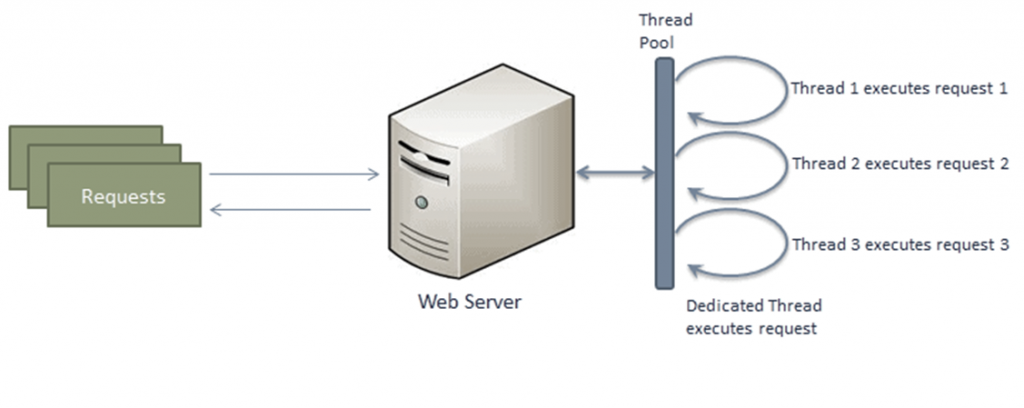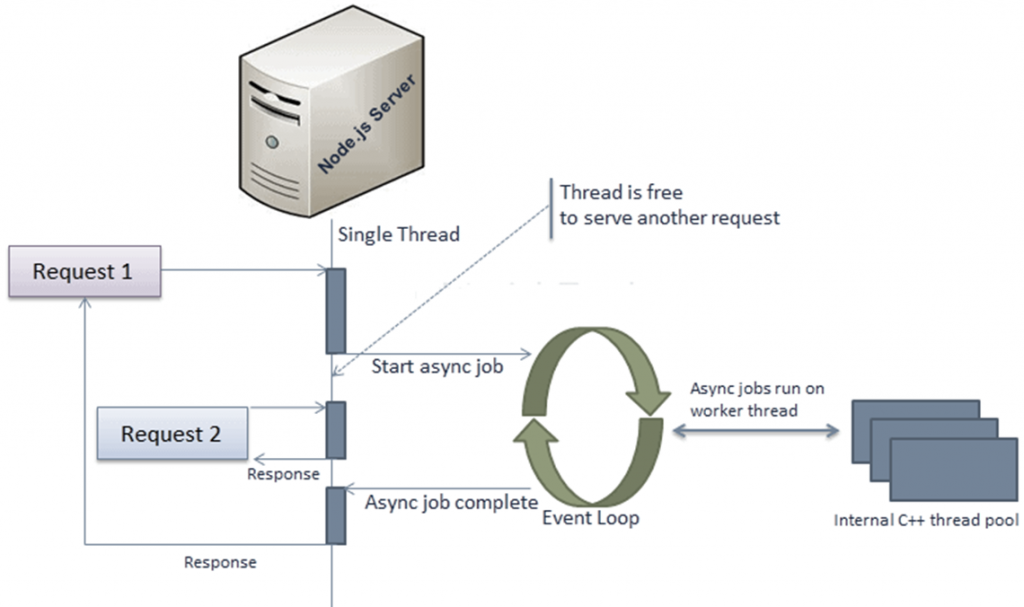Because of Node’s non-blocking and asynchronous nature, Node applications are very scalable. In this article, we’ll look at the NodeJS framework’s Process Model, which is based on a single main thread that runs the show.
Model of a Traditional Web Server
Each request is processed by a dedicated thread from the thread pool in the classic web server approach. If no thread is available in the thread pool at any given moment, the request will be queued until the next available thread becomes available. A dedicated thread conducts a single request and does not return to the thread pool until the request has been completed and a response has been received.

The Process Model in Node.js
The process model of Node.js varies from that of standard web servers in that it operates in a single process and processes requests in a single thread. One benefit is that Node.js uses far less resources. When a request is received, it is added to an event queue. For an asynchronous task, Node.js employs an event loop to wait for events to be raised. The event loop is always running, taking requests from the event queue.

Depending on the nature of the request, one of two possibilities will occur. The answer will be created instantly and given back to the client if the request is non-blocking and does not include any long-running processes or data queries. If the request is blocking and requires I/O operations, it will be sent to a worker thread pool. The request will include a call-back function that will fire when the request is complete, and the worker thread will be able to transmit the request to the event loop to be returned to the client. When a single thread gets a blocking request, it passes it on to another thread, allowing the thread to perform additional requests in the meanwhile. Node.js is inherently asynchronous in this sense.

The combination of Node.js’s asynchronous nature and the single-threaded process’s decreased resource usage results in a large speed boost. It’s worth noting, too, that Node.js struggles with CPU-intensive tasks like image processing and computationally costly labour.
